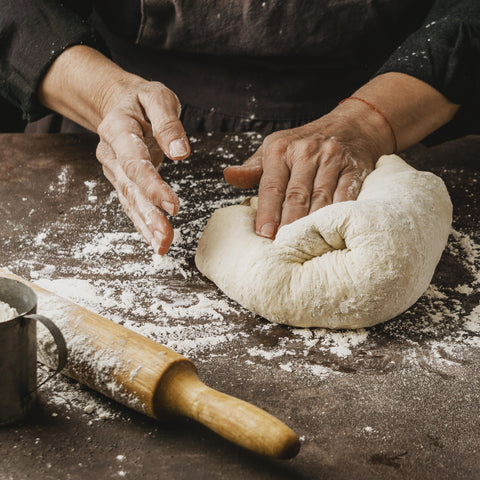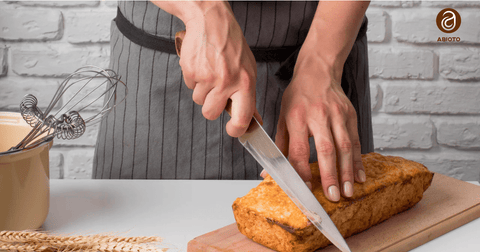A Comprehensive Guide to Making Delectable Sourdough Bread at Home
A popular artisanal bread, sourdough bread is created using a natural fermentation method that includes lactic acid bacteria and wild yeast. This contributes to the distinct flavor, texture, and scent of sourdough. It's easier than you might think to make your own sourdough bread at home. You can make a loaf of handmade sourdough bread that is just as wonderful as store-bought, if not better, if you have the correct materials, equipment, and methods!
Why Make Your Own Sourdough Bread?
By making your own sourdough bread, you can keep ingredients under control and steer clear of chemicals and preservatives that are frequently included in store-bought bread. Additionally, it offers you and your family a more wholesome and nourishing choice. For some folks, sourdough bread's gradual fermentation process may also make it easier to digest. Additionally, it's a fulfilling and enjoyable activity that ties you to the long-standing custom of baking bread.
Sourdough Bread: What Is It?
Made with a sourdough starter that contains wild yeast and bacteria, sourdough bread is a naturally leavened loaf. Sourdough depends on this naturally occurring yeast to rise and create its distinctive tangy flavor, unlike breads made with industrial yeast.
The Healthier Ingredients of Homemade Sourdough Bread:
-
Preservatives and other additives are not used in homemade sourdough bread.
-
Improved Digestion: The bread is easier to digest because the fermentation process breaks down complex carbs and gluten.
-
Distinct Flavor: It's challenging to duplicate the acidic flavor and chewy texture of sourdough with commercial yeast.
Equipment and Ingredients Needed to Make Sourdough Bread:
-
Flour (either bread flour or a combination of whole wheat and bread flour)
-
Salt and Water
-
Sourdough starter that is active
Essential Tools:
-
Kitchen scale with mixing basin
-
Measurement spoons and cups
-
Baking stone or Dutch oven
-
The spatula or bench scraper
-
A thermometer for ovens
Advice: Because the dough takes time to properly rise and ferment, baking sourdough calls for patience.
Step 1: Get the Sourdough Starter Ready
The foundation of your bread is the sourdough starter. It is a blend of flour and water that is allowed to ferment, fostering the growth of bacteria and wild yeasts.
How to make your own sourdough starter:
-
In a jar, mix equal parts water and flour (whole grain is preferable).
-
Give the mixture a full day to sit at room temperature. As the wild yeast begins to thrive, you should notice bubbles beginning to appear on the surface.
-
Every day, add additional flour and water to the starter, throwing out half of the mixture each time. The starter will be sour and bubbly after a few days, perfect for baking!
Step 2: Combine the dough and knead it
It's time to create the dough once your sourdough starter is active.
-
In a large bowl, mix together the starter, flour, and water.
-
To create a cohesive, sticky dough, thoroughly mix. To get the proper consistency, you may need to add a bit more water or flour.
-
Give the dough 20 minutes to rest (autolyze) so that the gluten can form and the flour can absorb the water.
-
On a surface dusted with flour, knead the dough for ten minutes, or until it is elastic and smooth. This aids in the dough's development of the structure required for the ideal rise.
Step 3: Forming the dough and proofing it
The process by which the dough rises and acquires taste is called proofing.
-
Knead the dough, then put it in a basin that has been oiled, and let it rise for 45 to 60 minutes, or until it is puffed.
-
Divide the dough in half and gently turn it out onto a floured board.
-
Let each part rest for 20 to 30 minutes after forming it into a spherical ball.
-
Form the dough into the loaf shape you want (boule, batard, or baguette) when it has rested.
-
Line a bowl or proving basket with a floured cloth and place the dough inside. Allow it to proof at room temperature for 4–8 hours.
Step 4: Sourdough Bread Baking
The last stage in making a golden, crispy sourdough loaf is baking.
-
To produce a hot, steamy environment, preheat your oven to 450°F (230°C) and place a baking stone or cast iron skillet inside.
-
To help the dough expand and create a lovely crust, score the top of the dough with a sharp knife.
-
The bread should be golden brown and hollow when tapped on the bottom after 30 to 40 minutes of baking.
-
Add ice cubes or a little water to the oven to create steam for a crispy crust.
Advice on Making the Best Sourdough Bread
-
Make use of premium flour: Whole grain flours, such as whole wheat or rye, aid in the growth of wild yeast.
-
Make sure your starter is turned on: It should rise steadily and be tart and bubbly.
-
Manage the moisture content of your dough: To get a dough that is controllable yet slightly sticky, adjust the amount of water.
-
Allow the bread to cool: To retain moisture and taste, let the bread cool fully on a wire rack.
Conclusion: Easy Sourdough Bread
Making sourdough bread at home is a fun and fulfilling experience. Baking sourdough is an art that can be mastered with effort and perseverance. You can make a tasty, nutritious bread that rivals any store-bought loaf by following these instructions, utilizing high-quality ingredients, and taking care of your sourdough beginning. Are you prepared to begin making your own sourdough? Try it now and discover the delight of making your own handmade bread!




Comments (1)
Ggggrrrrrr. What are the ratios? How much flour water and salt! Gggggrrrr! 🤬